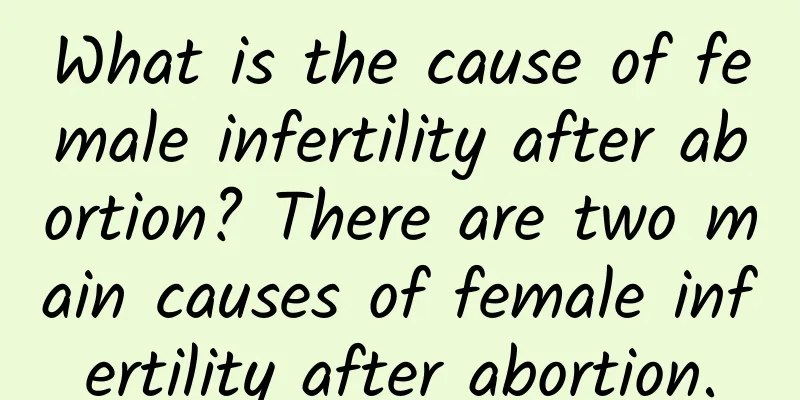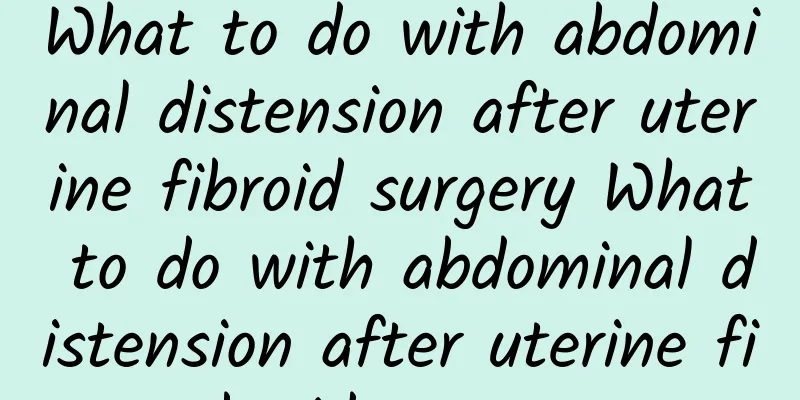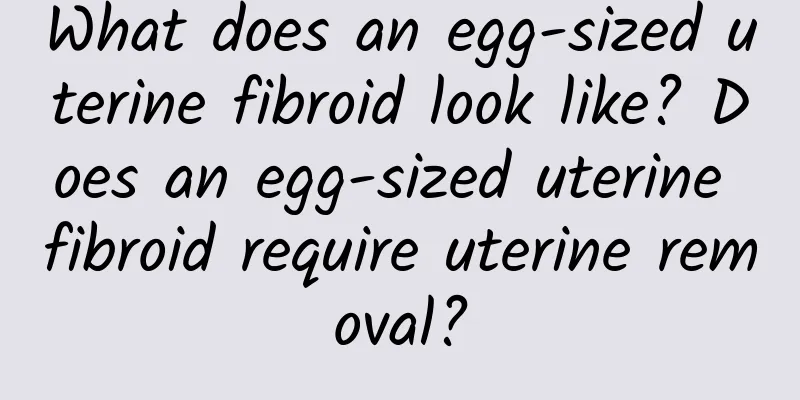What is the cause of female infertility after abortion? There are two main causes of female infertility after abortion.

|
Infertility after artificial abortion accounts for a certain proportion of infertility, and there is a trend of increase. There are two main causes of infertility after artificial abortion (blockage, poor patency), and the other is intrauterine adhesion. According to the author's recent statistics, abnormal patency of fallopian tubes accounts for 56.82% of infertility after artificial abortion, and intrauterine adhesion accounts for 60.71%, which is a very high proportion. As for other causes such as endometriosis and corpus luteum insufficiency after artificial abortion, the incidence is relatively lower than the first two. The first two are also the focus of treatment. The following methods can be used in combination to treat fallopian tube patency: intramuscular injection of chymotrypsin; Chinese medicine can be used for blood circulation, stasis and stagnation, heat-clearing and detoxifying drugs, oral administration, enema, and abdominal external application. Tubal ventilation, fluid perfusion, and physical therapy can also be performed to achieve better results. In recent years, a few hospitals in China have used hysteroscopic catheterization and fluid perfusion to treat abnormal fallopian tube patency, and have achieved satisfactory results. The specific method is to insert a thin plastic tube into the fallopian tubes on both sides under direct vision of the hysteroscope, and inject gentamicin, dexamethasone, saline or procaine through each plastic tube. The drug has anti-inflammatory and adhesion-releasing effects, and the pressure during the injection of the drug can clear the blocked fallopian tube. Because the fallopian tube is directly injected and pressurized, the effect is significant, and the fallopian tubes of some patients can be cleared. Treatment of intrauterine adhesions usually involves separating adhesions with a probe or a small curette. This method is performed without direct vision and is extremely blind, so the adhesion separation is not thorough and is prone to damage to the surrounding normal endometrium and myometrium tissue. Currently, the preferred method is to perform adhesion separation under direct hysteroscopy. Since adhesions are clearly visible, not only can the scope of adhesions be seen, but also the nature of adhesions can be identified, so the separation is thorough and does not damage the surrounding normal tissues. In this case, Ms. Chen had adhesions at the opening of the right fallopian tube, which were precisely separated under direct hysteroscopy to reveal the opening of the fallopian tube, and the blocked fallopian tube was cleared through intubation and fluid perfusion. This treatment effect cannot be achieved using general methods of separating adhesions. It can be seen that hysteroscopy has a dual role in diagnosis and treatment of abnormal fallopian tube patency and uterine adhesions, and is an effective method for diagnosing and treating infertility after abortion. This operation is safe and painless. The operation is performed about 3 days after the menstruation is over. |
Recommend
What causes uterine fibroids to grow? What causes uterine fibroids to grow?
What causes uterine fibroids to grow? What causes...
Create a celebrity-like waist! 8 acupuncture points for waist shrinking
Every woman dreams of having a "snake waist&...
Does pressing your thumb to induce menstruation work?
The question of whether thumb pressing is effecti...
What causes ectopic pregnancy?
Ectopic pregnancy is a problem faced by many fema...
Can’t lose weight? This magical cup of "black bean coffee" can help you lose weight and get a good physique
Why is it so difficult for people to lose weight ...
Schizophrenia patients are more likely to suffer from amenorrhea
It is common for schizophrenia patients to suffer...
Let me introduce to you what are the symptoms of menopausal menstrual disorders?
During menopause, women's ovarian function be...
What are the symptoms and causes of endometriosis?
I believe that many female friends have heard of ...
How to treat early stage endometriosis
The initial symptoms of endometriosis are usually...
Is cervicitis an inflammation of the cervix?
Yes, cervicitis is an inflammation of the cervica...
Eat the right food and lose weight naturally! 4 Tips to Lose Weight in a Healthy Way
There are a lot of ways to lose weight, just eat ...
Is cervical erosion contagious?
Is cervical erosion contagious? The occurrence of...
Analysis of the symptoms of pelvic inflammatory disease and pelvic pain
In today's society, there are more and more p...
How much does it cost to treat an ectopic pregnancy?
How much does it cost to treat an ectopic pregnan...
Experts introduce two treatment methods for ectopic pregnancy
There are many treatments for ectopic pregnancy, ...






![[Video version] This exercise is essential to increase immunity during the epidemic!](/upload/images/67dcf8e833ca2.webp)


